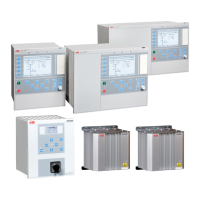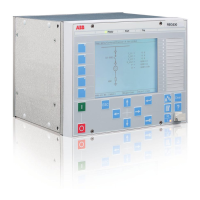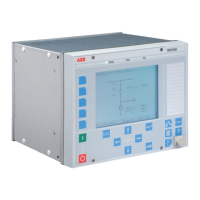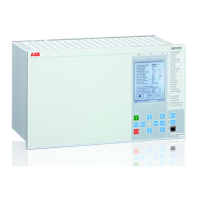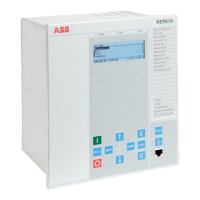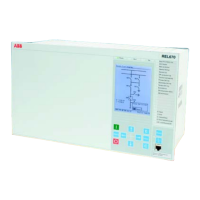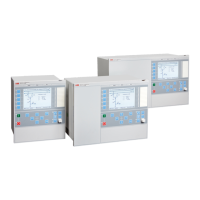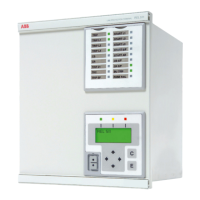2
A C
C Trf CT TF
C
I I
V2
Z Z Z Z
I V1
+
= + + × ×
æ ö
æ ö
ç ÷
ç ÷
è ø
è ø
ANSIEQUATION-1750 V1 EN (Equation 170)
where
Z
AT
and Z
CT
is the line impedance from the A respective C station to the T point.
I
A
and I
C
is fault current from A respective C station for fault between T and B.
V2/V1 Transformation ratio for transformation of impedance at V1 side of the transformer to the
measuring side V2 (it is assumed that current and voltage distance function is taken
from V2 side of the transformer).
For this example with a fault between T and B, the measured impedance from the T point
to the fault will be increased by a factor defined as the sum of the currents from T point to
the fault divided by the IED current. For the IED at C, the impedance on the high voltage
side V1 has to be transferred to the measuring voltage level by the transformer ratio.
Another complication that might occur depending on the topology is that the current from
one end can have a reverse direction for fault on the protected line. For example, for faults
at T the current from B might go in reverse direction from B to C depending on the system
parameters (see the dotted line in figure
130), given that the distance protection in B to T
will measure wrong direction.
In three-end application, depending on the source impedance behind the IEDs, the
impedances of the protected object and the fault location, it might be necessary to accept
zone 2 trip in one end or sequential trip in one end.
Generally for this type of application it is difficult to select settings of zone 1 that both
gives overlapping of the zones with enough sensitivity without interference with other
zone 1 settings, that is, without selectivity conflicts. Careful fault calculations are
necessary to determine suitable settings and selection of proper scheme communication.
8.4.3 Setting guidelines
8.4.3.1 General
The settings for Full-scheme distance protection, mho characteristic function
(ZMHPDIS) are done in primary values. The instrument transformer ratio that has been
set for the analog input card is used to automatically convert the measured secondary input
signals to primary values used in ZMHPDIS.
The following basics should be considered, depending on application, when doing the
setting calculations:
Section 8 1MRK 506 369-UUS -
Impedance protection
266 Line distance protection REL670 2.2 ANSI
Application manual

